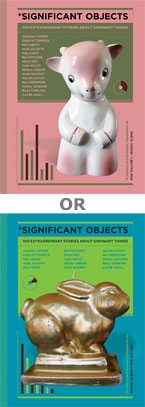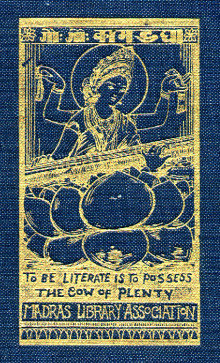
Joshua Glenn & Rob Walker, eds (2012). Significant objects: 100 extraordinary stories about ordinary things
From heirlooms to makerspaces
Though my paper-laden days are well behind me, I recently had a data retrieval need for which a 3-ring binder was the ideal solution. This sparked my discovery that the heirloom 3-hole punch I inherited from my Aunt Eleanor is missing, probably from an office move/reorganization a couple of years ago. Obviously the punch is not as critical to my office routine as it once was.
One avenue for my ensuing office equipment quest would have been to presume upon my wide acquaintance with the back rooms of public libraries. But I try not to presume.
Mulling over my vanished heirloom led me to think about other, more modern tools, not consigned to back rooms, that libraries are beginning to invest in: 3D printers, and beyond printers, complete makerspaces. The premise is that libraries have an opportunity to give readers access to the tools they need to practice as makers.
I jumped on the reader-as-maker bandwagon some years ago, advocating for shaped cake pans as a public library resource. Toy libraries before that, come to think of it: a room full of toys is a room full of tools that help a child imagine and create. 3D printers are another step in the maker-with-artifacts direction.
Can’t afford a 3D printer? How about a 3-hole punch?
Not many libraries offer 3D printers. The online buzz is extensive, but orbits around a small core of early adopters. My home state of Iowa has 543 public libraries; only one responded when I put out a call for 3D printers or makerspaces.
This is not surprising in an era of reduced funding and close scrutiny of public services. 3D printers are expensive. And the space, overhead, and time needed to set up and manage a new service is an even greater commitment. It will be years, if at all, before public library standards require that every library have a makerspace.
So back to Aunt Eleanor’s 3-hole punch. Dee Crowner at the North Liberty Public Library has rounded up some “take for granted” courtesies that public libraries offer, such as an “Office basket (stapler, tape, paper clips, ruler, etc.).” I would like to add a 3-hole punch to Dee’s office basket. I suspect some libraries offer a designated service such as she describes, but I know most libraries don’t. In my experience, quite a few libraries consider reader requests for office supplies and equipment to be a nuisance at best. It’s not the business they’re in.
But those pesky readers are making something. A résumé; a class assignment; a love letter; a business plan; Das Kapital. As you lay the groundwork for your library’s makerspace, which may well attract a whole new set of readers, why not practice with the readers makers you already have? For small libraries, a care basket of equipment and supplies; for large libraries, a work space equipped to rival the office-away-from-home of a 4-star hotel.
Readers are makers
I want to hold on to the metaphor of readers as makers, and not just because many readers happen to be creating a tangible product. Cognitive research shows that reading is an active process through which a person uses physical signs to create meaning. The old metaphor of readers as passive consumers of disembodied information has been retired. Whether the text is Lord of the Rings or a recipe for gooseberry fool, readers are makers.
Helping readers make stuff is the business we’ve always been in, no matter if the result is a physical or a mental artifact. Makerspaces are just a more obviously physical version of what we’ve always done, not a revolutionary reset. To awkwardly gloss Ranganathan, books [and 3D printers] are for use. Always have been, always will be, in a marvelous put-it-together-yourself sort of way.
And not just books and 3D printers. If you’re lucky enough to live near a public library with an active toddler program, drop in on a session in the company of the requisite toddler. Attention spans don’t really exist; tangential noise is more-often-than-not welcome; and when the big musical finale breaks out, absolutely no one is on beat or in tune. But occasionally you will glimpse a toddler smile with joy, struck by an insight she hasn’t put together before. Occasionally you will witness a toddler making her life, in a library makerspace.
Links, citations, and asides
- The title comes from an old saw about what holds the world up. The punch line: “It’s turtles all the way down!”
- This post is about making physical and mental artifacts. For a stimulating exploration of narrative connections between the two: Joshua Glenn & Rob Walker, editors (2012). Significant objects: 100 extraordinary stories about ordinary things.
- Number of Iowa public libraries: Iowa Library Services, Pocket Digest: Iowa Public Library Statistics FY11.
- Das Kapital. See the delightful first paragraph from Christopher Hitchens in The Atlantic (2009), “The Revenge of Karl Marx.”
- Dee Crowner, “take for granted” courtesies: IOWALIB mail list, February 19, 2013.
- Office supply basket: Here’s a simple, easily-implemented test of the widespread notion that the era of paper documents is over, guaranteed to give you feedback specific to your community: put an out of order sign on your copier(s) for a week.
- Though not about makerspaces, this post from The Atlantic – Cities on libraries offering co-working spaces traces the maker impulse back to the Library of Alexandria: Why Libraries Should be the Next Great Start-Up Incubators.
- A good introduction to the excitement about makerspaces in public libraries: Makerspace: Madison Public Library sees innovation centers as a key part of its future.
- A brief beginners guide from American Libraries Magazine, highlighted by an interview with Cory Doctorow: Manufacturing Makerspaces.
- Make magazine is one of the founding resources of the makerspace movement. See also its Maker Faire spinoffs.
- In a well-reasoned caution, Hugh Rundle is not at all sure that 3D printers are a natural library service (more of a “cargo cult,” he suggests): Mission creep – a 3D printer will not save your library. Patrick Hogan rounds up some of the library blogosphere reactions to Rundle at ALA TechSource: 3D Printing in Libraries: Inspiration or Distraction?
- Former Wired editor Chris Anderson looks at the big picture (2012): Makers: The New Industrial Revolution.
- More than you probably want to know about how we transform squiggles on a page into meaningful communication. Stanislas Dehanene (2009): Reading in the Brain: The Science and Evolution of a Human Invention.
- Before reading, there was language. Benjamin K. Bergen proposes that we construct linguistic meaning through embodied cognition (2012): Louder than Words: The New Science of How the Mind Makes Meaning




